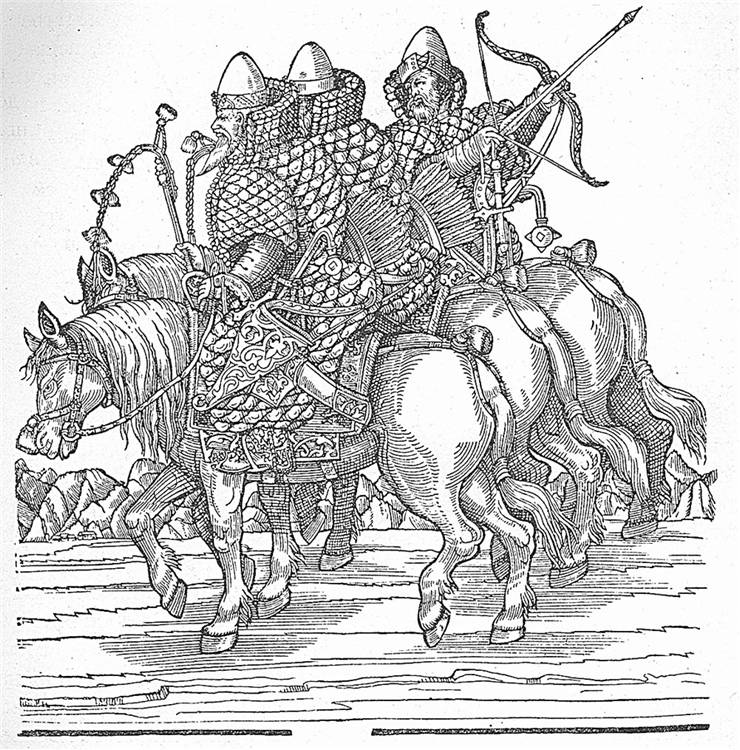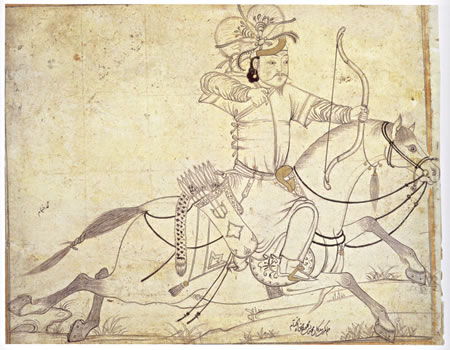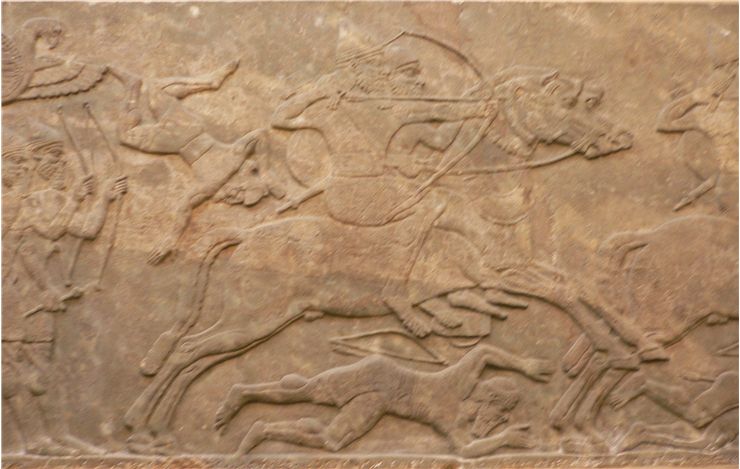The History of Mounted Archery
Mounted archery is a type of archery where an archer shoots from a bow while riding a horse or some other riding animal. As a technique it appeared in large open areas, where it was a highly successful for hunting, for protecting the herds, and for war.
Mounted archery appeared for the first time during the Iron Age as a more practical replacement of the Bronze Age chariot. Evidence of early mounted archers can be found in artwork of the Neo-Assyrian Empire from the 9th century BC. Eurasian nomads, Scythians, Sarmatians, Sassanids, and Indians had mounted archers in antiquity while Mongols and the Turkic peoples had their cavalries with bows during the Middle Ages. Scythian, Hun, Parthian, Cuman or Pecheneg horsemen were light archers Byzantine kavallarioi, Russian druzhina and Japanese samurai were heavy mounted archers. Light horse archers were skirmishers which moved swiftly and, because they were able to quickly retreat, harassed the enemy. Heavy mounted archers, on the other hand, attacked as disciplined units and, after they shot five or six volleys, they would charge the enemy with close combat weapons, such as lances or spears or they formed mixed units with lancers. They were dressed in mail or lamellar armor and helmets, and they sometimes even had armored horses.
During the Medieval times German and Scandinavia armies use of mounted crossbowmen. They were used as scouts and skirmishers, for protection of the flanks of the knights and infantry, and to chase away the enemy light cavalry. They would also charge at the enemy flank, and when close shoot at them and then attack the enemy with swords, without reloading.
Defense against the mounted archers were foot archers. Archers on foot or crossbowmen could outshoot the archers riding a horse which were also a larger target. Because of that many armies tried to have enough foot archers and crossbowman. Mounted archers became obsolete for the same reason as foot archers - firearms. In the 16th century the first firearms appeared and although they could not be fired as fast as arrows and often could not work in wet weather they had larger range and greater penetration. When lighter variants were invented, firearms were adopted by the cavalry and 16th century Dragoons and Carabiniers were heavier cavalry equipped only with firearms. Bow and crossbows remained parallel in use until the invention of repeating firearms and the disappeared until the modern days.
Modern horseback archery was revived in 1921 in Mongolia after independence. Foundation of the Mongolian Horseback Archery Association tries to keep mounted archery alive to this day. Its members have competed in South Korea and Europe. In Europe this tries Kassai Lajos from Hungary who holds several schools of mounted archery and whose pupils participate in competitions and meetings around the world. These competitions are held in Hungary, Germany and other Central European countries, in Canada, United States and in South Korea.
There are different “schools” of horseback archery as a sport. “Kassai school” or “Hungarian technique” uses the Western method of shooting “around the bow” and a three-fingered release where arrow rests on the over the back of the left hand holding the bow if an archer is right handed. They also us light bows and carbon arrows to shoot at a immobile target. Korean archery shoots at a moving target. Traditional Japanese archery, “Yabusame”, uses long bows with a blunt and round-shaped arrow which makes a loud sound when it strikes the target board. It was revived in the Edo Period (1600–1867) by Ogasawara Heibei Tsuneharu as a method of personal development rather than military training.


